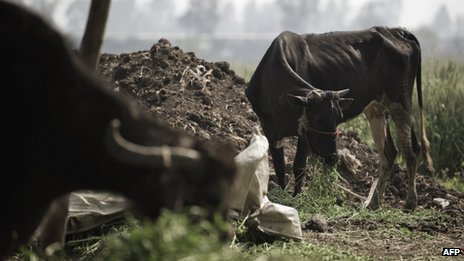By Tom Westcott.
Tripoli, 18 July:
Experts are warning that locust-fighting equipment lost during the revolution needs replacing urgently, before swarms of locusts . . .[restrict]now in Niger and Mali return to Libya in the autumn.
Tens of millions of locusts that flew south from Libya and Algeria are now threatening crops and pastures in Niger and Mali. However, with control systems also interrupted by political instability in Niger and Mali, even greater swarms of the destructive insects are expected to return to Libya in October.
Locust infestations were reported north-west of Ghat in January and, with limited resources after the revolution, preventative control measures were restricted during the key egg-laying period of February to April.
Before the revolution Libya managed desert locusts with large motorised survey and control teams, who monitored and sprayed the destructive pests.
Khaled Mohamed El-Gadgoud, the National Locust Director in Libya, told Libya Herald: “During the revolution most of the equipment was lost. We tried to collect what we can and make our operation and we managed to collect some cars. We only have about 20 vehicles for survey and control and about 50-60 people.”
Only about 21,400 hectares of infested land in Libya were sprayed this year. This was not enough to prevent swarms forming in May and moving into Niger and Mali.
Spraying locusts whilst they are still on the ground prevents them from mating and laying eggs. Organophosphate chemicals are dispensed from vehicle-mounted sprayers.
The UN’s Food and Agriculture Organisation (FAO) said “Regular ground surveys by national teams in Algeria and Libya were disrupted by political events in Libya.” Algerian teams were unable to check areas close to the border.
Thus June, Keith Cressman, FAO senior locust forecasting officer, told the Financial Times that “the fall of Qaddafi was an enormous factor” in allowing locusts to breed in the south-west of the country. “It depleted the Libyans’ capacity to monitor and respond as they normally would.”
Gadgoud explained that he was in the process of trying to “get money and support” to replace lost stores and equipment. “We are expecting swarms again in October or November and are preparing now for that time.”
The FAO has warned that if control operations in Niger and Mali are ineffective and if the conditions are favourable, the number of insects could increase 250 times by October when the swarms move back into Libya, Algeria, Mauritania and possibly even Morocco.
The desert locust is a species of Acridoidea, or short-horned grasshoppers, that can form dense and highly mobile swarms of adults or bands of hoppers (wingless nymphs). Females lay between 80 and 158 eggs and can lay several times in their three to five month lifespan. A one square kilometre swarm of these animals eats the same food in one day as 35,000 people. [/restrict]






